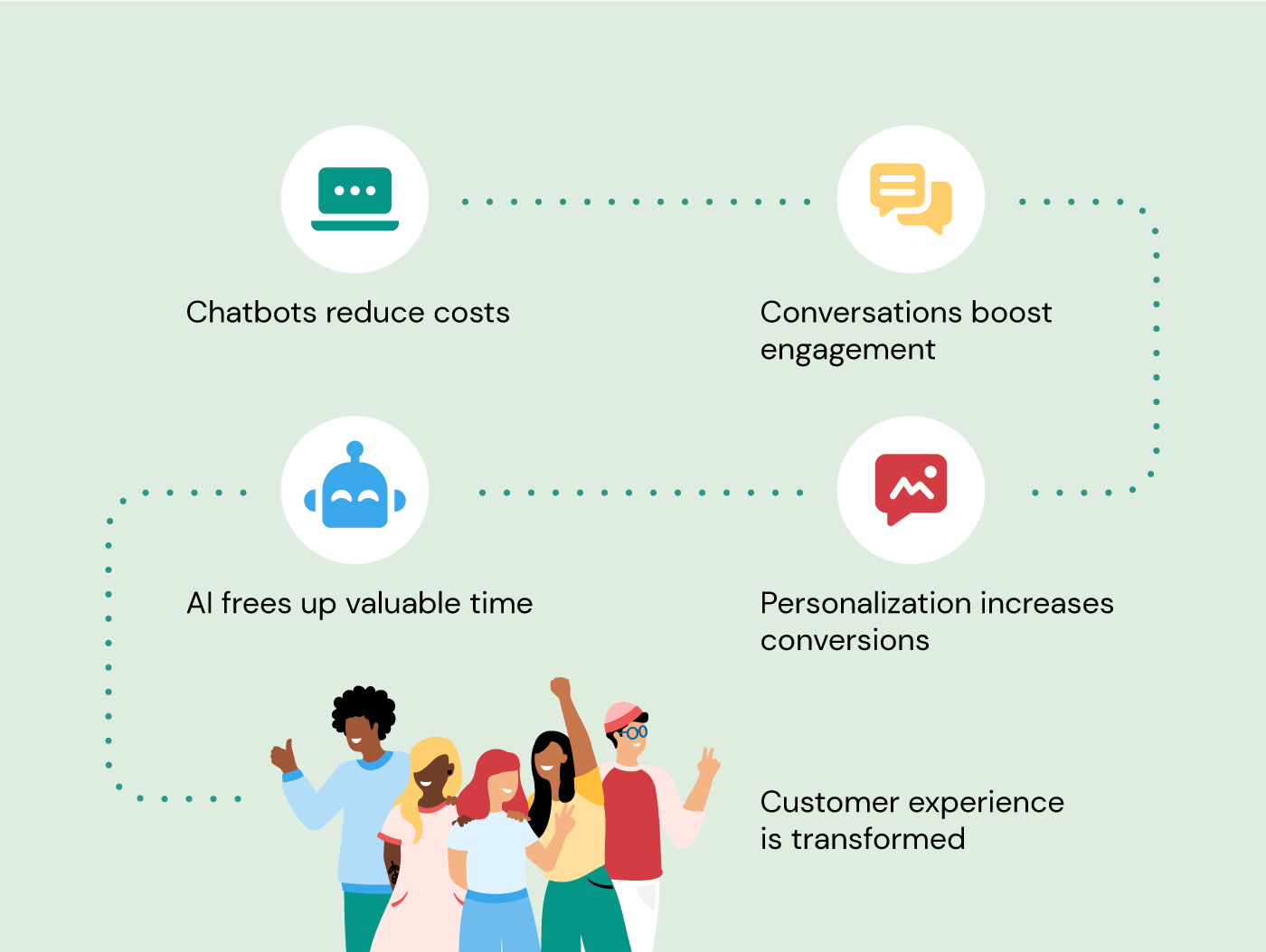Insights
Customer experience transformation: What it is + how to boost your CX strategy

Insights

Let’s face it, adapting your customer experience (CX) to the ever-changing expectations of today’s consumers is no easy task.
Why is a CX transformation so difficult? Well, in addition to the challenge of hitting a moving target, great customer experiences are the result of unique engagements that both satisfy customer needs and add value, at different points in the customer life cycle.
New channels, technologies, and consumer preferences are constantly bringing big, new opportunities for CX-minded businesses. And those businesses are racing to win the minds of customers.
Let’s explore the meaning behind transforming the customer experience and how doing so can land your business bigger returns on your CX investments.
CX transformation is a comprehensive process that looks at your business’s culture, operations, and talent to spotlight ways that you can alter your practices to center and improve the customer experience.

Every business experiences customer service hiccups that deliver important lessons. Harnessing and turning those lessons into knowledge and actionable plans are the core of a CX transformation strategy – and it takes a village to get there.
There are 4 crucial cornerstones of improvement that a transformation hinges on:
You can’t accomplish a shift in CX mindset if you neglect a pillar because each relies on the others for success. Your talent uses tech both to collaborate and to engage with your customer base, driving business operations forward so that the vision and strategy can come together.

Picturing a successful customer experience shift is the easy part. Figuring out how to transform your customer experience is another story – it’s by no means impossible, but it takes effort on everyone’s part to truly succeed. When it does succeed, the CX benefits are worth their weight in gold.
Through a CX transformation, your business can recoup inactive customers and reduce active customer churn, encouraging consumers to up their loyalty and stick around longer. The transformation will also likely lead to more money spent per person and more referrals brought in by your happy customers.
It’s no secret that CX and customer loyalty go hand-in-hand. Customers are more likely to stick around when they trust you to care for their needs and make things convenient.
A successful transformation can reduce churn and keep customers coming back for more. This means focusing more on acute customer needs, like how they want to communicate with your business, where and when they want to do so, and why they prioritize your business over others in the first place.
A communications partner like Sinch can help you streamline talk across channels to pinpoint your users’ biggest needs. That way, you can address those needs directly to improve satisfaction and prove that you’re a worthwhile vessel for the customer journey.
Less churn means more customers sticking around for longer, which means a higher customer lifetime value (CLV). In fact, on an individual basis, customers who report positive experiences might spend 140% more than those who have negative experiences. But don’t just trust the CX statistics, measure that impact for yourself.
Churn and CLV are two main indicators for customer engagement that help to measure the impact of your CX overhaul. A key way to measure these indicators is with CPaaS technology that uses agile reporting tools powered by real-time analytics to create a clear picture of your customers’ behaviors.
Customers will likely spend more with businesses that use clear, concise, and timely communication – and are more likely to do the opposite when they don’t.
The last benefit to a CX reinvention is the one that drives the biggest ROI. If customers understand that your CX benefits them personally, they’re more likely to recommend your business to others – their friends, relatives, colleagues, and more.
However, the opposite is just as true. If customers notice that CX isn’t a priority for you or that you’re not targeting their actual needs, they’ll have something to say about it. Almost twice as many customers tell their friends about negative experiences as positive ones.
To avoid those naysayers, make sure you’re focused on the long-term vision and strategy for your brand that we outlined above. Future-proofing your CX strategy by making it adaptable is crucial.

As you gear up to overhaul your customer experience, keep these tips in mind for a sure shot at success.
A huge portion of your customer engagement probably comes from customer service interactions. Improving those interactions is fairly simple with the right tools.
Going conversational with artificial intelligence (AI) may sound complicated, but it’s not. Let chatbots handle the basics and free up your live agents to deal with more complex issues. You’ll save a lot of time and money while improving customer satisfaction.
That’s exactly what happened when iFood trusted chatbots to scale its customer support and onboarding for new team members. Customers immediately fell in love with the addition, with an overwhelming 94% of all tickets being automated and a smile-inducing 91% satisfaction rate. Not to mention this automation saved iFood 70% of their service costs. Convinced yet?
What’s the difference between a conversation and a conversion? Two letters – and a bit of personalized, automated outreach.
If you’re not yet using conversational messaging for marketing and lead generation, it’s time to start thinking 2-way. Engage customers and prospects (or recruits) through interactive messaging conversations on the channels they want, when they want.
Nissan took this strategy for a spin with geo-targeted campaigns to reengage unresponsive customers and boost brand loyalty among existing ones. As a result, they saw a 470% engagement increase in select campaigns – all while using their existing CRM.
Sometimes customers need just a little push to finish that purchase. Use the power of personalization to give them that push in a friendly way. Using rich media features, you can increase engagement and make each transaction smoother.
Macif wasn’t seeing the returns they wanted through traditional customer service channels like email and SMS. They partnered with Sinch to revitalize their efforts through RCS and saw engagement rates explode. After implementation, RCS helped Macif see click rates double compared with SMS and triple compared to email.
Want to increase customer service efficiency by easing 20% of the current inbound load? That’s exactly what Argenta Bank did, using conversational AI to automate handling thousands of messages.
By implementing a chatbot named Charlie to answer inbound questions, Argenta helped ease the burden on their overworked agents. Those agents then had the freedom to pivot to more complicated customer service tasks that they backlogged.
Many inbound queries are simple. Don’t waste precious time having agents respond to questions that could be answered with simple FAQs.
As communication channels evolve, customer preferences change. Whether you’re managing a customer experience transformation in banking, health care, financial services, or any other industry, the right CPaaS provider will make it easy to adjust and optimize your customer engagement strategy.
With CPaaS, you can also adapt your CX to disruptions in the market as quickly as they happen.